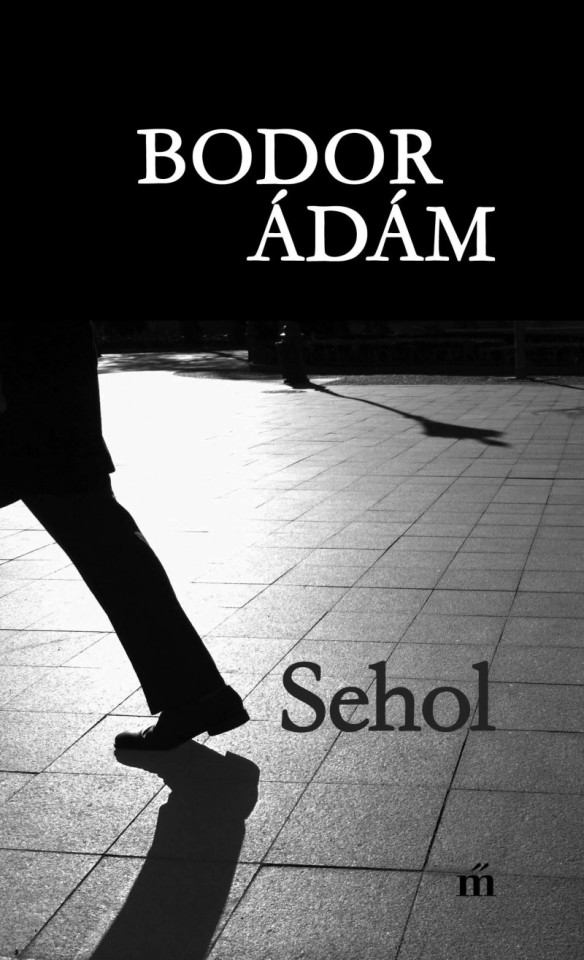#Ádám Bodorics
Text
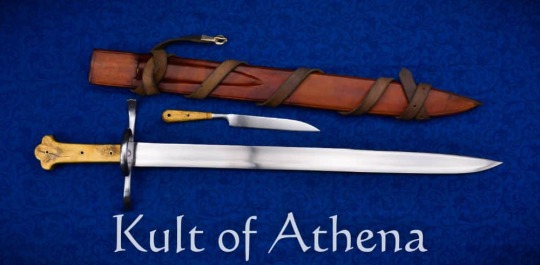


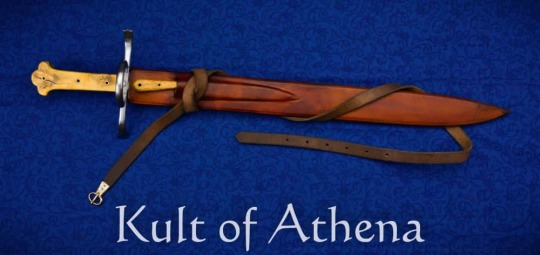
Ádám Bodorics – Beham Messer with Ring Hilt and Brass Frame Boxwood Grip
This Beham style Messer by specialist swordsmith Ádám Bodorics is a wonderfully agile sword in the hand that strikes with velocity and power – its wide and well-tempered blade bites deeply and its thin profile along the main cutting portion of the blade passes through a target with little drag and resistance – a truly fierce performer in a scrap of a melee! The thick ring at the hilt gives impressive protection to the entire hand from even notably larger weapons and the grip is a unique composite with the thick tang riveted and embedded between two halves of smoothly polished boxwood which is framed in strips of finely worked brass. The wood grip halves may look cracked, but they are actually created from a deliberate reconstruction of smaller pieces with strong and colored bonding filler in order to give the grip a unique theme and appearance that is perfectly apt to the troubled times of early 16th century Germany.
The sword is matched with scabbard of well-carved wood which is wrapped in linen for a binding to aid in durability which is then finished with overlaid tight leather with a compartment for a matching byknife which is included. Integrated and knotted to the scabbard is a thick sword belt with an adjustable buckle for wear. Below is Ádám’s own words on his unique creation offered here:
Messers take a huge variety of form and construction. This piece is based on a 1540 woodcut by Hans Sebald Beham with a subtle Memento Mori theme. In the 16th century, knifelike sidearms undergo several changes, one of them being the increasing regularity of hidden tangs. Illustrations from the period sometimes show rather complex grip shapes that would be complicated with a full-tang construction, but a hidden or a frame tang makes them much more trivial. Hans Sebald Beham often shows interesting grip shapes even in a bucolic setting, and it’s one of his woodcuts I based this piece on.
The straight and nimble blade is ground from 51crv4 (6150) high-carbon steel and is heat-treated to 50-52 HrC. It is optimized for cutting and slashing. It has plenty of distal taper and a wide fuller along it’s length. The cross has a gentle S-shape and a sidering instead of a Nagel. It is still affixed to the blade with a rivet o make sure it’s not mistaken for a sword or falchion or storta. The finials of the cross echo the trilobate design of the grip. The real tang of the blade reaches to about two-thirds of the grip. A thin steel plate was cut to the intended shape of the grip with a brass strip formed and soldered along it’s edges. The grip panels sit on the edges of the frame with the cavity between the panels and the tang filled with adhesive following the style of surviving frame-tang sidearms.
The byknife is hand-forged and ground from 80crv2 with integrated bolsters and a forge-welded mild steel tang. The grip panels are affixed by glue and tubular brass rivets of increasing diameter. The grip panels are boxwood, buxus sempervirens. These pieces were hand-picked to highlight the effects of the blight eradicating old growth, namely the aggressive checking from quick drying following rapid defoliation and the cloudy dark discolorations. There is evidence for boxwood’s continuous use for over two millennia, but as specimens large enough for larger carvings take an immense amount of time to grow, preventive culling or neglect of infected trees both make it near-impossible for this material to stay for long. To me, using these specific slabs was like erecting a gravestone, removing the need for any overt Memento Mori or Totentanz motifs.
The scabbard has a wooden core, linen wrapping and a vegetable tanned leather wrap with an integrated subsheath for the byknife. It is dyed a light brown and is undecorated to keep the attention on the hilt of the Messer. There is a belt threaded into two slits in the back of the sheath, crossing over to either side.
#Kult of Athena#KultOfAthena#New item Wednesday#Ádám Bodorics#Adam Bodorics#Beham Messer with Ring Hilt and Brass Frame Boxwood Grip#sword#swords#weapon#weapons#blade#blades#European Swords#European Weapons#Medieval Swords#Medieval Weapons#Renaissance Swords#Renaissance Weapons#messers#16th century
33 notes
·
View notes
Text



Adam Bodorics Swordmaker | Facebook
With all three short-gripped Ruggers done, it's time for some comparisons. Even though the pommel-less version has a noticeably shorter grip, it's still only 23 grams lighter due to the quite different blade cross-section. The pommeled one is obviously the heaviest, even though the tang is tapered and fullered from both sides. The spine shot shows that while the very tip is practically the same 60° triangle, the rest of the blade is quite different.
Long-gripped/short-gripped/pommeled:
Oal: 725mm/670mm/665mm
Weight: 744g/721g/808g
Pob from top of bolsters: 92mm/119mm/95mm
0 notes
Text
0 notes
Quote
Az első fagyos hajnal volt, az ég színétől kékes derengéssel bőrözött rajta a hamvas jéghártya.
Bodor Ádám: Verhovina madarai – Változatok végnapokra
21 notes
·
View notes
Text
Fölemelő érzés fölösleges és terhes dolgoktól idejében megszabadulni.
1 note
·
View note
Photo

Nádas Péter, Esterházy Péter, Bodor Ádám, Spiró György és Závada Pál, 2011
8 notes
·
View notes
Video
youtube
Galaxisok: Janó és Dzsó (2020)
nem igazán írtam itt erről a lemezről tavaly, mert (full disclosure!) ismerősökről (eredendően innen a tumblrről persze, honnan máshonnan?!) nyilván kicsit más írni, ha rossz lenne azért, ha jó akkor meg azért, nem mintha amúgy mostanában ez a blog tele lett volna lemez- és (érthető okokból) koncertbeszámolókkal. de tegnap a kobuciban lejátszották egy csodás hangulatú koncerten az egészet, ezért ennek alkalmából mégis leírhatom, hogy ősszel nekem elég fontos volt ez a lemez (és így egyben mondjuk sokkal erősebben megérintett, mint az amúgy jó dalokat szintén tartalmazó szintén tavalyi eggyel korábbi album), ahogy a covid-para, az amerikai elnökválasztás-para és a mit fogok amúgy csinálni-para összeért, és a világ bezárult egy második (akkor még nem tudhattuk, hogy jóval hosszabb) karanténra. az pedig külön jó volt, hogy egy ennyire személyessé váló és szeparált időszakban pont a sokszor sejtelmes, talán lazán valamilyen - mindig kicsit homályban maradó - összekapcsolódó sztorivá is összeálló, mások életéről szóló történetek adták az anyag vázát - még ha a jelenre is lehettek jóval direktebb utalások (”ébressz fel ha véget ért ez az év”). (2020-ban, amikor a világ amúgy is egy nyomottabb bodor ádám-regénnyé kezdett változni, az elbeszélő stílus sokkal adekvátabbnak tűnt, mint egy elsősorban lírai hang.) de ami amúgy nekem ilyen körülmények között a legfontosabb üzenet volt, az a jövő determinálatlansága - az, hogy bármi, amit csinálunk, nem kell, hogy meghatározza örökre a dolgokat. ennek nyilván van egy kifejezetten önreflexív olvasata a zenekar(i tagok) saját csapásirányaira, de nekem máshogy is személyes lett, amikor például arra gondoltam, hogy az akadémiai pálya (amiből félreértés ne legyen, a tanítást és a kutatást is szeretem egyelőre) valamennyire lehatárolja a jövőt, amitől pedig kifejezetten ódzkodtam. hát nem mondom, hogy ezek a problémák teljesen feloldódtak közben, de a “van borunk és sárgadinnyénk és szokol rádiónk és napfény és egy ismeretlen évtized” egy ilyen pillanatban igazán pozitív végkicsengés.
remek buli volt, a kobuci amúgyis egy jó hely, amitől maximum azért idegenkedtem eddig, mert óbuda messze van, de a covid mindenen változtat, talán azon is, hogy a város túlcentralizáltsága kicsit enyhül, ami - innen a hetedik kerületből nézve - egyáltalán nem lenne rossz. bónuszként még kiváló bajai halászlevet is kaptunk, mi más kellhet még egy szombat estéhez.
10 notes
·
View notes
Text
"Te csak ne ígérj semmit. Ígérjük inkább azt, hogy nem ígérünk egymásnak semmit. Elég lesz nekünk a pillanatok őszintesége. Ugye érted? Szükségünk van ígéretekre? Hát nincs."
- Bodor Ádám
#igeret#igeretek#igerni#kapcsolat#kapcsolatok#ember#emberek#szerelem#szeretet#szeretni#barat#baratsag#baratok#esely#eselyek#idezetek
743 notes
·
View notes
Text


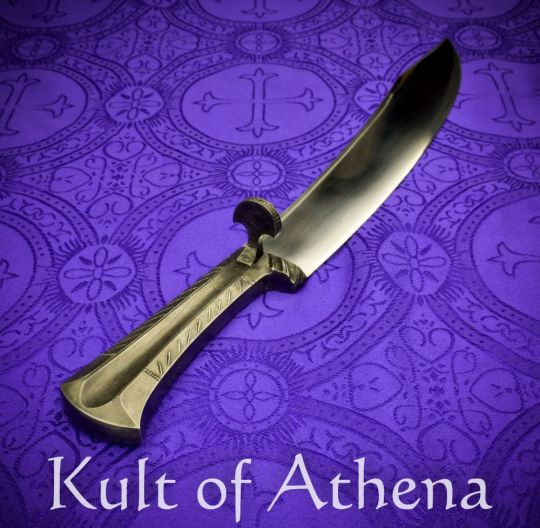

Ádám Bodorics – All Steel Bauernwehr and Scabbard
This stylistically unique and custom crafted Bauerwehr bt Ádám Bodorics has a sharpened and well tempered blade which is solidly constructed and matched to a hilt of steel. The dagger comes with a scabbard of wood hich is sheathed in steel and completed with a steel hanging belt loop. The dagger feels quite capable and authoritative in the hand and its blade has a thick spine to ensure it has excellent durability. Below are Ádám’s own thoughts on his custom creation:
The Bauernwehr is the dagger-sized relative of the Messer, and it also exhibits noticeable variation. This specific piece has no historical analogue as far as I know, rather it’s an interpretation of a trend present on a variety of different sidearms from the period. All-metal and full-steel sidearms appear with some regularity from the end of the 15th century.
We see it on an early rapier, a glorious Kriegsmesser, several quillon daggers, stortas – so to me it made sense to create a Bauernwehr in this style. The blade is hand-forged and ground from 80crv2 and is heat-treated to 54-56 HrC. It has a minimal amount of distal taper to avoid making it too hilt-heavy. The false edge is also fully sharpened. There is a narrow and shallow fuller on both sides along the spine. The tang extends into the hilt only partially and is heavily tapered. The entire hilt is forged, ground, filed and chiseled from a single piece of mild steel. The “bolster” and “pommel” areas are marked out with pairs of filed lines, further decorated with chiseled lines. The fuller extends from the “bolsters” all the way through the “pommel”, with the sides further emphasized with a filed border. The “grip” area is lightly decorated with chiseled diagonals, emulating the puff&slash fashion slowly coming into vogue by the end of the century. It is secured to the blade by five steel rivets peened and filed down. Three rivets are along the tang, one at the edge end of the “bolsters” and one at the spine end of them.
The Nagel is also embellished by filework and chiseling, and is peened on the other side, with the peen filed down very close to the fuller of the grip. The entire hilt was cold-blued with a light touch bringing out the high spots, highlighting the details. The scabbard is based on a variety of dagger scabbards, redesigned to fit the curved blade. It has a wooden core and a mild steel cover fabricated from multiple pieces. It emulates the puff and slash fashion of the 16thcentury and has a relatively simple and subdued finial. The suspension is a chain made up of strips and rings of steel, based on a period original, terminating in a steel belt loop. It is also cold-blued and highlighted to match the hilt.
#Kult of Athena#KultOfAthena#New item Wednesday#Ádám Bodorics#Adam Bodorics#All Steel Bauernwehr and Scabbard#Knives & Daggers#Knife#knives#Medieval Knives & Daggers#Renaissance Knives & Daggers#weapon#weapons#Medieval Weapons#Renaissance Weapons#Bauernwehr#80crv2 High Carbon Steel#Battle Ready
13 notes
·
View notes
Text
Ádám Bodorics 32 fullers Messer
Chin dripping masterpiece from a true master.


Adam Bodorics Swordmaker | Facebook
Keeping busy - that's 32 individual fullers on the blade. That part is loosely based on multiple Sumersperger pieces, while the overall shape and size is based on a Dürer woodcut. The fullers could've been a bit shorter each plus more haphazard and random, but I wanted to play it safe on my first attempt.

Adam Bodorics Swordmaker | Facebook
This one's done too. A pretty free interpretation of Dürer's bagpiper with ebony grips and Sumersperger-esque fullering. It'll still need a scabbard and bypieces, just like the Karlsruhe one and the ebony-bone hilted piece, so… I see a lot of scabbardmaking in my very near future.

Adam Bodorics Swordmaker | Facebook
Today was a scabbardy day.
0 notes
Photo

Bodor madárhatározó ^^
9 notes
·
View notes
Photo

SHEPHERD: THE STORY OF A JEWISH DOG (2019)
Starring August Maturo, Ken Duken, Ayelet Zurer, Ádám Porogi, Viktoria Stefanovszky, Lois Robbins, Miklós Kapácsy, Kristóf Widder, Miklós Béres, Gábor Nagypál, Zsolt Páll, Piroska Mészáros, Levente Molnár, Alexis Latham, Carna Krsul, Máté Haumann, Péter Scherer, Peter Linka, Géza Bodor, Peter Schueler, Zsuzsa Gyöngy and Hans Peterson.
Screenplay by Lynn Roth.
Directed by Lynn Roth.
Distributed by JDog Films. 93 minutes. Not Rated.
The atrocities of Nazi Germany circa World War II were legendary and well-documented. It is a bit of a surprise when you run across one you haven’t heard of before after all these years.
In Shepherd: The Story of a Jewish Dog we see the story of Kaleb, a beloved pet of a Jewish family who must give him up when the Nazis outlawed Jews having pets. Therefore, the German Shepherd bounces from home to home before living on the streets and eventually being put into the pound, where he is “recruited” by a Nazi officer who teaches him to track Jews.
Yes, compared to the Nazis’ other atrocities, some may say the banning of pets is a tiny bit insignificant, but it is actually a horrible attempt to sublimate and dishearten the Jewish people.
Now, I’m not 100% sure if this law really happened or if it was just come up with for this story. From what I could find in a quick search online, for as horrific as many of the Nazis were, most of their leaders were animal lovers and staunch defenders of animal rights. (Even Hitler had a beloved dog.) While I can certainly see them choosing to deny the love of a pet to the Jews, it’s harder to see them allowing the animals to live the hard life of strays and perhaps starve on the streets. Of course, it’s an entirely different conversation about what it says about the Nazis that they treated animals better than they did human beings, but that is not news. And, of course, that’s kind of the point of this film.
Still, true historical fact or not, it’s a fascinating story idea, but also one that must be handled rather delicately by filmmakers. In general, dog films tend to be a bit cute, just because canines are so damned charming. However, by making the film too adorable, it would sort of trivialize the tragic back story of being Jewish in the middle of Nazi Germany. (Even for a dog!)
At the same time, if the film was made to be too dark – as the broad subject matter most certainly lends itself to – then the majesty and the beauty and natural adorableness of the title dog (and other dogs who pop up throughout the film) can be overwhelmed by the horror of the situation.
For the most part, Shepherd: A Story of a Jewish Dog handles this balancing act well – never really getting too cloying, nor too tragic.
And the dog who plays Kaleb – well, wow, he’s just a beauty.
Which is a good thing, because the character of the dog is the only character who is in this film straight through. People come and go in his life (and in one instance comes back), but mostly we are following this lovely German shepherd’s path through life.
The film starts as Kaleb is born to a well-off middle class Jewish family in Germany of the 1930s. He is the runt of the litter of five puppies had by the family’s beloved shepherd, and when the parents insist that they cannot have six dogs in their apartment, young son Joshua (August Maturo) falls particularly hard for Kaleb and begs the parents to let them keep at least him.
Kaleb grows to be big and strong and healthy and very smart, and his bond with Joshua keeps growing deeper. However, Nazism is growing in the town and the family is slowly losing rights and being ostracized. When the no pets law comes down, they must reluctantly find new homes for Kaleb and his mother.
The new home Kaleb is sent to is that of a nice ineffectual man and his mean wife. He brought Kaleb as a gift for his wife, who was mourning the death of their beloved dog, but she wants nothing to do with this new “Jewish dog.” Kaleb escapes and finally makes his way back to his home, but his family is already gone.
He ends up living on the streets with a pack of stray dogs, eventually being caught and put in the pound, and finally being adapted by a Nazi officer – who is more feeling than most, but still a Nazi and able to become ruthless at a moment’s notice – who trains Kaleb to find hidden Jews. Eventually Kaleb and his new owner end up working at a concentration camp, where it turns out that Joshua is one of the prisoners.
I won’t go any deeper into the storyline, because a big part of the fun in Shepherd is to see what happens. Much of it is not exactly surprising, but it is also touching and intriguing. The dog who plays Kaleb is actually quite accomplished as a canine actor – with his soulful eyes he is able to look mournful and excited in a way that is quite affecting.
Like I said above, it mostly avoids the potential pitfalls of becoming too dark or too sentimental. Shepherd would actually be a nice gateway to introducing smaller children to the atrocities of the Holocaust, but it is also entertaining for adults – particularly animal lovers.
And I have to say again, the dog who plays Kaleb is just gorgeous. Just watching him prance around for an hour and a half is time well spent.
Jay S. Jacobs
Copyright ©2021 PopEntertainment.com. All rights reserved. Posted: May 28, 2021.
youtube
4 notes
·
View notes
Photo
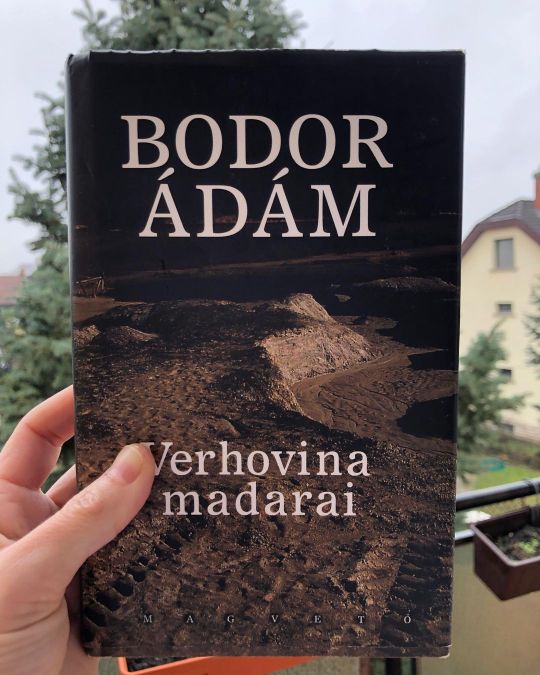
Szürke, nyákos, hideg idő van, néha egésznap borzongok, noha bent ülök a meleg szobában, levéltelen ágak, folyton hulló permet, károgó varjak, mintha egy világszéli városban lennék. Ritkán van ilyen, hogy a valós tér ennyire összecseng egy regénybeli tájjal, idővel, hangulattal. Bodor Ádám regényét valahogy így képzelem, csak ott több a jég, több a sár, több a halál és nincsenek madarak. Verhovinán áll az idő. A mozdulatlanságot, ezt a furcsán rideg, tartózkodó (olykor bizalmaskodó), hallgatásokkal teli világot néha megtöri egy-egy idegen érkezése, de ez csak ideig-óráig tartó kizökkenés. Aki nem ebben a kénes szagokkal átitatott, csúszós és sáros, mélycsendben álló világban él, az nem tud beilleszkedni, nem érti a szokásokat, nem érti a pillantások jelentését. Az idegenek ritkán teszik be a lábukat erre a peremvidékre, olyankor halált hoznak magukkal. Vagy az „idilli” zárványvilág pusztulását, ami a modern világ habzsoló, mindent magának akaró ingatlanfejlesztéséből adódna vagy egyszerűen csak ok nélkül eltávolítják helyéről a brigadérost, akit másnap megfagyva küldenek vissza egy lovas szekéren. De a halál az idegenek nélkül is ott kering a vidék felett: hol villámcsapás, áram, fulladás, fűrész formájában, van, akit megölnek, van, aki csendben elalszik, de van, aki önként megy a halálba. De hogy itt minden a pusztulásra ítéltetett, mi sem mutatja jobban, mint a madarak eltűnése. Egyébként közel sem ennyire depresszív könyv, néhol egészen lírai, tele van halmozásokkal, metaforákkal, alliterációkkal és erős szimbólumokkal. És a végén a madarak is visszatérnek. https://www.instagram.com/p/CLHIte_hVaREr3WRYnb31HqkyCuUL5YU3lddPM0/?igshid=15zcpit9uz9cy
17 notes
·
View notes
Text
Vétkek nélkül mérhetetlenül kietlen és szegény lenne az életünk, kevesebbet tudnánk magunkról, egymásról, és arról a helyről, ahol ezek a dolgok történnek. Az örökös józanság, a tisztaság, a tökély hallatlanul üres, steril, egyszersmind az unalomtól szomorú, vigasztalan állapot.
0 notes
Text


és ebből alakult ki a lista, érdekes, kik maradtak le:
Balla Zsófia: A darázs fészke
Bari Károly: A mozdulatlanság örökbefogadás
Barnás Ferenc: Életünk végéig
Bodor Ádám: Sehol
Csabai Laszlo: A videk lelke
Darvasi László: Magyar sellő
Grecsó Krisztián: Vera
Harag Anita: Évszakhoz képest hűvösebb
Kovács András Ferenc: Requiem Tzimbalomra
Krasznahorkai László: Mindig Homérosznak
Kukorelly Endre: CéCéCéPé
Láng Zsolt: Bolyai
Mark�� Béla: Amit az ördög jóváhagy
Nádasdy Ádám: Jól láthatóan lógok itt
Nemes Z. Márió: Barokk Femina
Pál Sándor Attila: Balladáskönyv
Péterfy Gergely: A golyó, amely megölte Puskint
Schein Gabor: Megleszünk itt
Szilágyi István: Katlanváros
Tóth Krisztina: Fehér farkas
3 notes
·
View notes
